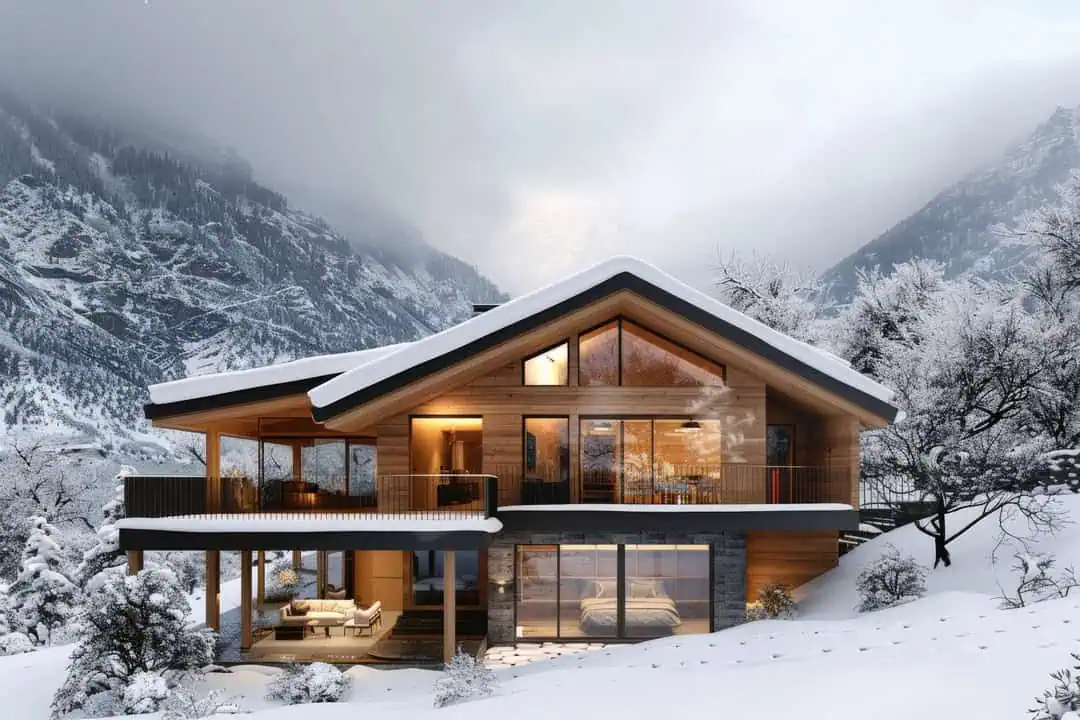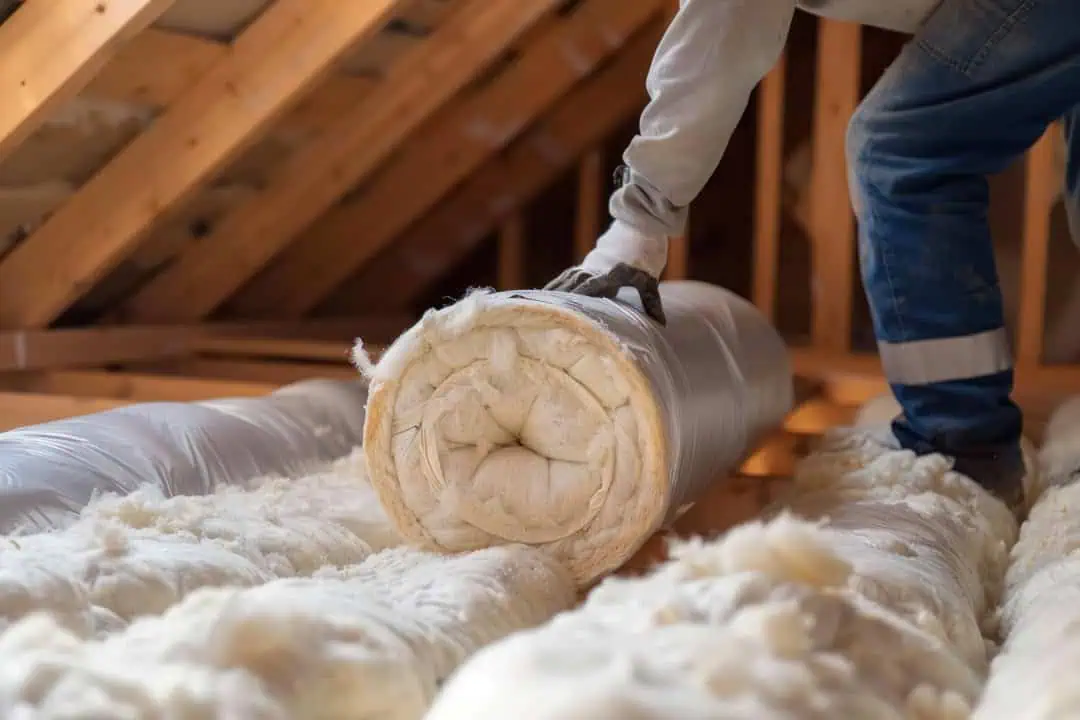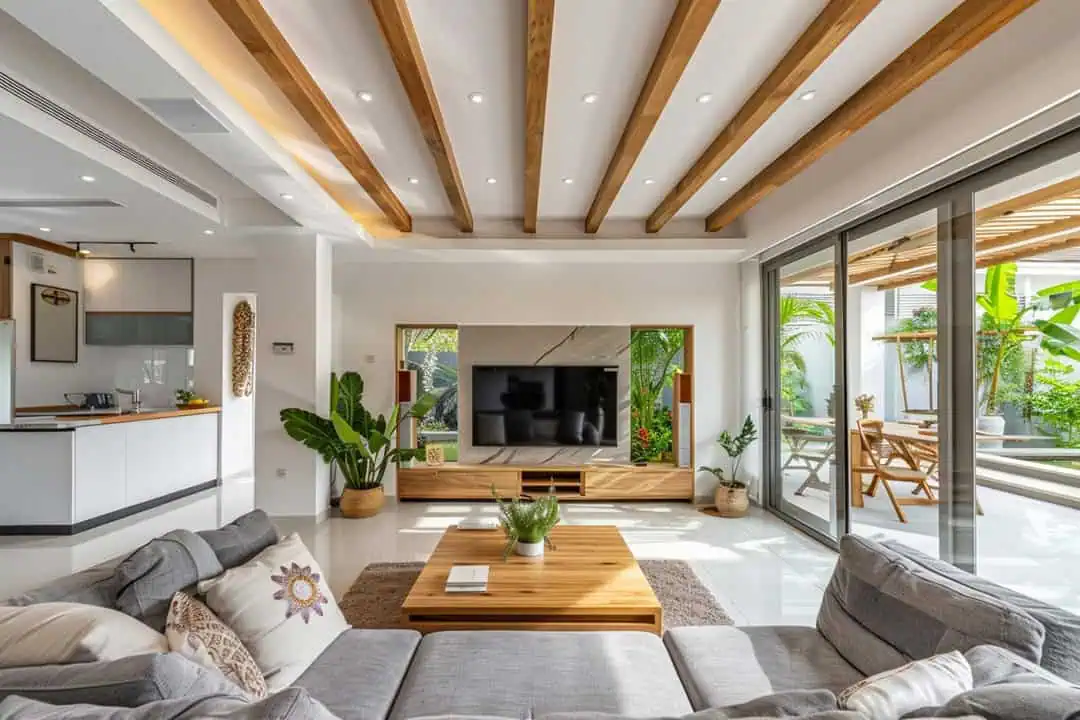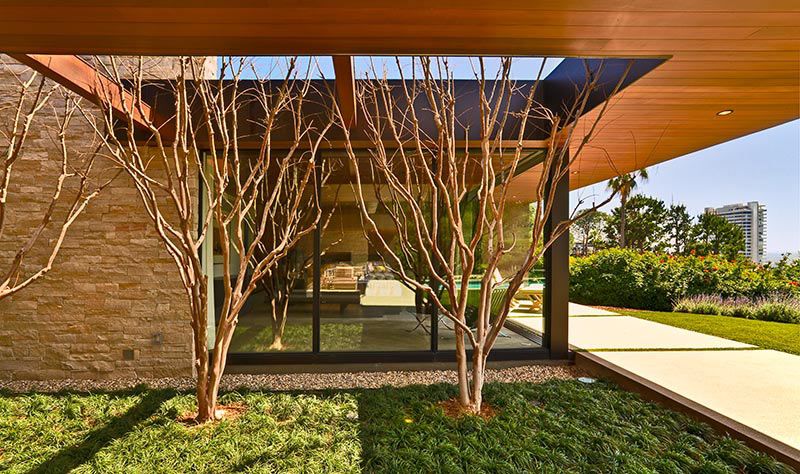Maintain a comfortable home throughout the year is essential for our well-being and quality of life. However, the extreme temperatures, whether cold of winter or the sweltering heat of summer, can be converted our shelter-in-place and uncomfortable and even harmful for our health.
The solution to this problem is found in the insulation of the roof, a measure of long-lasting and effective that can transform our home into an inviting space and sustainable. Insulate the roof of your house from the cold and the heat will provide you with a number of significant benefits.
In the first place, you will enjoy a interior environment more comfortable and pleasantregardless of the external weather conditions. This results in greater comfort and well-being for you and your family, which is reflected in a better quality of life.
In addition, the insulation of the roof will allow you to drastically save on your power bill. To reduce the need for heating and cooling, decrease your consumption of energy, which is reflected in a cost savings is substantial.
This not only benefits your family budget, but it also contributes to the environmental sustainability to reduce the carbon footprint of your home.
In this article, we will explore the different methods and materials available to insulate the roof of your house, giving you the tools necessary to make the best decision and turn your home into a comfortable and efficient all year round.
In this post, we delve into:
Advantages of isolating the roof
Insulate the roof of your home offers a wide range of benefits that go beyond the regulation of the internal temperature.
The advantages are the following:
Comfort throughout the year
The insulation of the roof allows you to enjoy a pleasant and comfortable atmosphere in winter as in summer. In the colder months, it prevents the cold from penetrating your home, while maintaining an internal temperature warm and comfortable. By contrast, in the warmer months, protect your home from excessive heat, giving it a cool refuge and relaxing. This results in a more homelike environment to relax and enjoy a good night's sleep.
Savings on the electricity bill
By significantly reducing the need for heating and cooling, the roof insulation results in a noticeable savings in your energy bill. This not only benefits your family economy, but also contributes to environmental sustainability by reducing the carbon footprint of your home.
Protection against humidity and mold
The roof insulation prevents condensation and the formation of mold, which improves the indoor air quality and protects the structure of your home. In addition, it reduces the risk of health problems associated with moisture and mold, creating a healthier environment for you and your family.
Improving acoustics
The roof insulation also improves the acoustics inside by reducing the outside noise. This gives you a more peaceful atmosphere and quiet, which is especially beneficial for those who live in urban areas or near noisy areas. In addition, it contributes to a greater privacy and quality of life in the home.
Methods for isolating a roof
There are several options and methods to insulate the roof of a house from the cold and the heat. Each of them has characteristics and specific advantages, so it is important to carefully analyze the needs of your home and the climatic conditions of your region to choose the most suitable solution.
Thermal insulation of polyethylene
The thermal insulation of polyethylene is a popular and effective to insulate the roof of a house. This material is characterized by being lightweight, flexible and easy to install. In addition, it offers an excellent thermal barrier, which makes it an effective solution both for cold climates as warm.
One of the main advantages of thermal insulation of polyethylene is your capacity to significantly reduce the heat transfer through the roof. This results in a decrease in the need for heating in winter and cooling in summer, which is reflected in a considerable saving on your power bill.
In addition, the insulation of polyethylene is resistant to moisture and mold, which contributes to maintaining a healthy environment in the interior of your home. Its installation is relatively simple and can be performed on both new roofs and the roof already built, which makes it a versatile option and accessible.
Aluminum foil reflective double layer
Another effective alternative to insulate the roof of a house from the cold and the heat are the aluminum foil reflective double layer. These films are composed by two layers of aluminum that act as a radiant barrier to reflect the heat and avoiding your transfer to the interior of the home.
One of the main advantages of the aluminum foil is reflective of their ability to reduce up to 95% of the heat transfer through the roof. This results in a notable decrease in the need for heating and cooling, which is reflected in a significant savings in your energy bill.
In addition, the aluminum foil reflective they are lightweight, easy to install and do not require an additional structure for your placement. This makes them an attractive option for both new roofs to roofs already built.
It should be noted that, in addition to excellent thermal performance, the aluminum foil reflective also offer an acoustic barrier, which contributes to improve the privacy and comfort of your home.
Glass wool
The glass wool is a material that is lightweight, economical and easy to install. It offers good thermal and acoustic performance, making it suitable for isolation inside and outside. However, one of your disadvantages is that it can be irritating to the skin and the respiratory tract, so that caution should be taken during your manipulation.
Rock wool
The rock wool is similar to the glass wool, but with some additional features. It is more resistant to fire and moisture, which makes it an ideal choice for humid climates or areas with risk of fire. Although it is heavier and more expensive than glass wool, your durability makes it an interesting alternative.
Expanded polystyrene (EPS)
The expanded polystyrene, commonly known as EPS, is a material that is lightweight and economical and offers good thermal performance. It is ideal for flat roofs or low slope, because it is easily adapted to these surfaces. However, one of your disadvantages is that it is less resistant to fire than other insulating materials, and therefore not recommended for your use in areas with high risk of fire.
Polyurethane foam (PUR)
The polyurethane foam (PUR) stands out due to excellent thermal and acoustic performance, with a high r value. Can be applied in the form of foam projected or in panels rigid, which makes it a versatile option. However, it is more expensive than other insulation materials, and it requires specialized manpower for your installation.
Paint rubber
The painting of rubber is an innovative solution to insulate the roof of a house from the cold and the heat. This type of paint is applied directly on the roof surface and form a waterproof layer and reflective acts as a thermal barrier.
Nail of the main advantages of the painting of rubber is your ease of application. Unlike other isolation methods, does not require a complex installation or placement of additional materials. Simply apply it in layers on the roof, which makes it a choice fast and easy.
In addition, the painting of rubber offers excellent protection against solar radiation, which helps to keep the interior of the house cooler during the warm months. Also, your capacity insulation helps to reduce heat loss in winter, which results in a saving in heating costs.
Another benefit of the painting of rubber is your durability. Once applied, you can keep your insulating properties and protective for several years, which makes it a long-term solution to insulate the roof of your house.
Paint mixing
Paint mixing is an effective alternative to insulate the roof of a house from the cold and the heat, especially in humid climates or with risk of condensation. This type of painting it is characterized by forming a barrier that prevents the formation of condensation on the surface of the ceiling. To prevent the accumulation of moisture, the paint mixing helps to maintain a dry environment and healthy on the inside of the housing, while avoiding problems such as the appearance of mold and the degradation of the materials.
In addition to your anti-condensation paint mixing also provides insulating properties that contribute to regulate the temperature inside. To reduce the transfer of heat through the roof, this painting helps maintain a more comfortable environment both in winter as in summer, which is reflected in a savings in heating and cooling costs.
One of the main advantages of the paint mixing is your ease of application. Like the paint rubber, is applied directly on the surface of the roof, without the need to install any additional materials. This makes it a quick option and simple, especially for ceilings already built.
How to insulate a roof that has already been built?
While it is simpler to insulate a roof during the construction of a housealso it is possible to isolate a roof that has already been built. There are several methods that can be applied in these cases, each one with your own features and advantages.
Insulate the roof on the inside
An option to isolate a roof that has already been built is to do it from the inside, using a system of strips and plates of laminated plaster. This method consists in setting a structure of strips of wood or metal on the surface of the roof, leaving a space between them that is filled with insulating material such as rock wool or fiber glass.
Subsequently, install the plates of laminated plaster on laths, creating a smooth and even surface. This solution enables you to isolate the ceiling without altering the exterior appearance of the house, which makes it an attractive option for those who wish to maintain the aesthetics of your home.
In addition, the system of battens and plasterboard laminate provides an excellent thermal barrier and acousticcontributing to the improvement of the comfort and the energy efficiency of the housing.
Insulate the roof outside
Other alternative to insulate a roof that has already been built is to do it by the outside, using panels of polyurethane or rock wool. This method consists in placing these insulation materials directly on the ceiling surface, covering the entire structure.
One of the main advantages of isolating the roof on the outside is that it does not restrict the living space of the interior of the housing. In addition, this system offers a higher thermal efficiency, since the insulation is located on the envelope of the building, avoiding the loss of heat or cold. However, this method tends to be more expensive and requires skilled labor for your installation.
In addition, it can alter the aesthetic exterior of the home, so it is important to consider this aspect before making the decision.
Insulate the roof with injection of polyurethane foam
A third option to insulate a roof that has already been built is the technique of injecting polyurethane foam. This method it consists in applying a layer of polyurethane foam directly onto the surface of the roof, by forming a barrier and thermal insulation.
The the main advantage of the injection of polyurethane foam is your ability to adapt to any shape or irregularity of the roof, creating a continuous layer and without joints. This results in a higher thermal efficiency and better protection against the entry of cold or warm air.
In addition, the polyurethane foam provides excellent insulation propertieswith a high R-value, which contributes to significantly reduce the need for heating and cooling in the home.
While this method requires specialized labor and can be more costly other options, injection of polyurethane foam stands out for efficiency and durability, making it an attractive solution for insulating roofs already built.
Considerations for the choice of the insulating material and method of installation
When choosing the insulation material and the method of installation is most appropriate for your roof, it is important to take into account several factors:
Climate of the area
The climate of the region where your property is a critical aspect. You must choose a material for insulation with an R-value (thermal resistance) suitable for the climatic conditions of your area, either for cold climates, hot or mild.
Type of roof
The shape and the slope of the roof will also influence the choice of installation method that is most appropriate. For example, the external insulation may be more suitable for roofs with higher slope, while the internal insulation may be more suitable for flat roofs or low slope.
Available budget
The budget is another key factor to consider. You should opt for an insulating material and a method of installation that will fit your budget, without compromising the efficiency of the insulation.
The owner preferences
Finally, it is important to take into account the preferences and needs of the owner. Aspects such as aesthetics, ease of installation, and the impact on the living space can be a determining factor when making the decision.
To carefully consider these factors, you can choose the solution of roof insulation that best suits your home, giving you comfort, energy savings and a positive impact on the environment.
Recommendations for the installation of the roof insulation
To ensure a successful installation and to secure the insulation of the roof, it is important to follow some recommendations:
Hire a qualified professional
While it is possible to perform the installation of the insulation from the ceiling by their own account, it is recommended to hire a qualified professional. This will ensure that the job is done right, complying with the rules of security and ensuring optimal performance of the insulating material.
Follow the manufacturer's instructions
Regardless of the insulation material you choose, it is essential to follow to the letter the instructions provided by the manufacturer. This will ensure that the product is installed correctly and that your performance is expected.
Pay attention to the ventilation
During the installation of the insulation, it is crucial to pay special attention to the ventilation of the roof. Adequate ventilation to prevent the accumulation of moisture, which could lead to problems of mold and condensation.
Sealing of all joints and openings
In addition to the installation of the insulation material, it is important to carefully seal all joints and openings on the roof. This will prevent the entry of cold or hot air, which will contribute to maintain a pleasant environment and reduce the consumption of energy.
Following these recommendations will help you ensure a safe installation and efficient, roof insulation, ensuring that your home enjoy the benefits of a comfortable atmosphere sustainable throughout the year.
Additional considerations for isolating a roof
In addition to the methods and insulating materials mentioned, there are some additional considerations that may influence the choice of the best solution to insulate the roof of your house from the cold and the heat.
Climate of the area
The climate of the region where your home is a key factor to keep in mind. You must choose a material for insulation with an R-value (thermal resistance) suitable for the climatic conditions of your area, either for cold climates, hot or mild.
Type of roof
The shape and the slope of the roof will also influence the choice of installation method that is most appropriate. For example, the external insulation may be more suitable for roofs with higher slope, while the internal insulation may be more suitable for flat roofs or low slope.
Available budget
The budget is another key factor to consider. You should opt for an insulating material and a method of installation that will fit your budget, without compromising the efficiency of the insulation.
The owner preferences
Finally, it is important to take into account the preferences and needs of the owner. Aspects such as aesthetics, ease of installation, and the impact on the living space can be a determining factor when making the decision. To carefully consider these factors, you can choose the solution of roof insulation that best suits your home, giving you comfort, energy savings and a positive impact on the environment.
Frequently asked questions about how to insulate the roof of my house
Why is it important to insulate the roof of my house?
Insulate the roof of your home is essential to maintaining a comfortable environment throughout the year. The insulation of the roof allows you to regulate the temperature inside, preventing the cold from seeping in winter and excessive heat in the summer. This results in greater comfort, a significant savings in the energy bill and a better quality of life for you and your family.
What are the main methods to insulate a roof?
There are several ways to insulate a roof, among which stand out:
- Thermal insulation of polyethylene: Material lightweight, flexible, and easy installation that offers an excellent thermal barrier.
- Aluminum foil reflective double layer: Act as a radiant barrier, reflecting up to 95% of the heat.
- Panels thicker: Offer a higher thermal resistance thanks to your higher thickness.
- Painting of rubber: It is applied directly over the roof, forming an impermeable layer and reflective.
- Paint mixing: Prevents the formation of condensation and maintains a dry environment and healthy.
How can I insulate a roof that has already been built?
If your ceiling is already constructed, there are also options to isolate it:
- To isolate the interior: Using a system of strips and plates of laminated plaster.
- To isolate the outside: By placing panels of polyurethane or rock wool directly on the roof.
- Injection of polyurethane foam: Apply a continuous layer of polyurethane foam on the ceiling.
What factors should I consider when choosing a method of isolation?
Some key factors to consider are:
- Climate of the area: Choose an insulating material with an R-value appropriate for the weather conditions.
- Type of roof: The shape and slope of the roof influence on the installation method that is most appropriate.
- Available budget: Opt for a solution that will fit your budget.
- The owner preferences: Take into account esthetic and practical aspects.
What are the benefits of isolating the roof of my house?
Insulate the roof of your house you will provide a series of benefits, among which stand out:
- Increased comfort throughout the year: Regulation of the internal temperature.
- Savings in the energy bill: Reduction of the consumption of heating and cooling.
- Protection against humidity and mold: Prevention of condensation problems.
- Improving acoustics: Reduction of outside noise and more privacy.
- Contribution to environmental sustainability: Reduction of the carbon footprint of the home.
Additional resources
- IDAE (Institute for the Diversification and Saving of Energy)
- Ministry for the Ecological Transition and the Demographic Challenge
- Andalusian Energy agency
Articles and studies on the isolation of the roof
Conclusion on how to insulate a roof
Insulate the roof of your house from the cold and the heat is a fundamental measure to create a comfortable and sustainable throughout the year. By taking advantage of the benefits of isolation, you can enjoy a comfortable indoor climate, you can save on your energy bill and contribute to the protection of the environment.
There are several options and methods to isolate the ceiling, each one with your own features and advantages. Since the thermal insulation of polyethylene to aluminum foil reflective, passing through the panels thicker the paint, rubber and paint mixing, you have at your disposal a wide range of solutions to insulate your roof effectively.
If your ceiling is already constructed, there are also alternatives to isolate the inside, the outside or by injecting polyurethane foam. Each method presents your own set of advantages and challenges, so it is important to carefully analyze the needs of your home and the climatic conditions of your region. When you invest in the insulation of your roof, you and your family can enjoy a home comfortable and healthy throughout the year, regardless of the external weather conditions.
In addition, contribute to environmental sustainability by reducing energy consumption and the carbon footprint of your home.
Don't wait any longer to transform your home into an oasis of comfort and efficiency. Isolate the ceiling is the key to creating a cozy space, and sustainable that will improve the quality of your life and the lives of those who inhabit it.
If you need more information or have any questions, do not hesitate to consult additional resources provided or in contact with experts as Living Kits.







